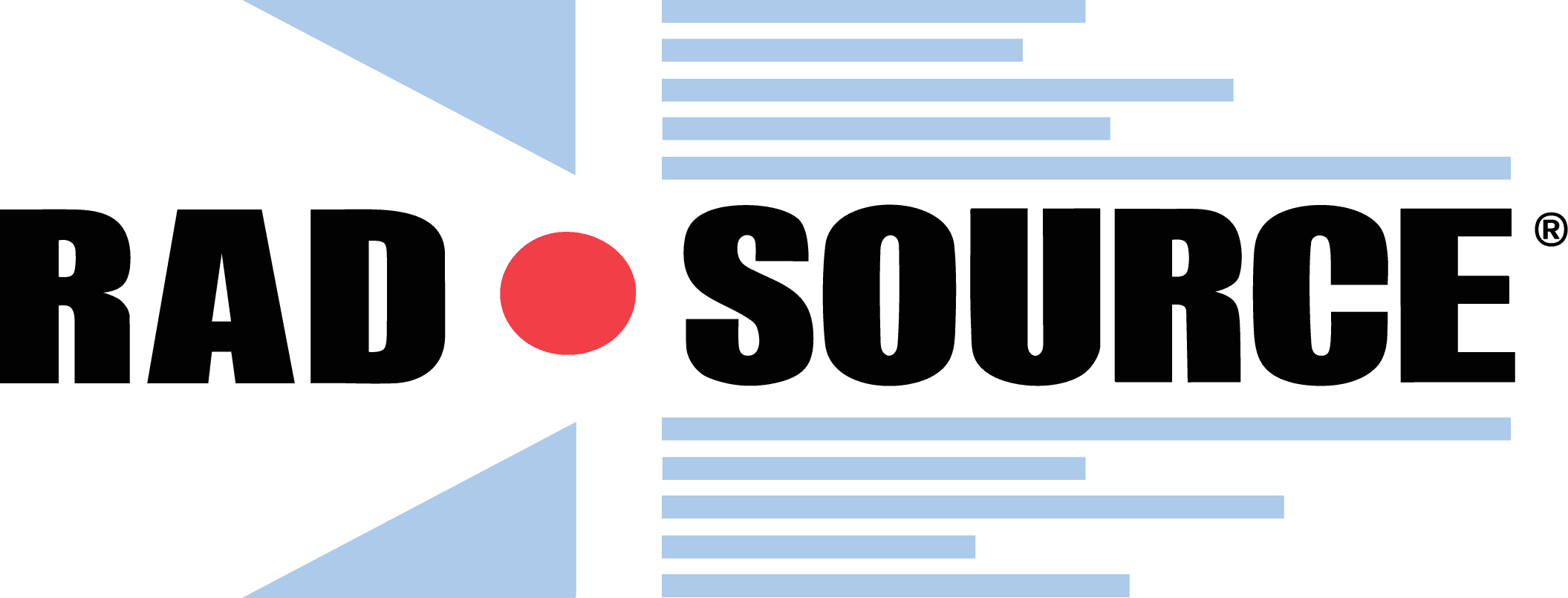

RS 1800•Q Biological Irradiator
The Most Powerful Dedicated Cell Irradiator Available
The RS 1800·Q Biological Irradiator is a cutting-edge research tool designed to provide precise and reliable irradiation for a wide range of life science applications. With its advanced features and user-friendly interface, the RS 1800·Q is an ideal solution for researchers seeking to advance their work in fields such as cancer research, immunology, and gene therapy.
When paired with RadPlus tools, the RS 1800·Q offers enhanced functionality and streamlined workflows, allowing researchers to focus on their science rather than the technology. Flexibility and precision make it an essential instrument for any research laboratory, and its compact design ensures it can be easily integrated into even the most space-constrained facilities.
See The RS 1800•Q In Action
The Performance is unmatched.
The RS 1800·Q Biological Irradiator leverages the power of QUASTAR technology to deliver unparalleled levels of precision and uniformity in radiation dose delivery. This advanced technology produces a larger, stronger, and higher-energy photon field, ensuring that even the most sensitive samples receive a consistent and reliable dose.
By harnessing the advantages of QUASTAR technology, the RS 1800·Q sets a new standard for irradiation research, enabling scientists to achieve more accurate and reproducible results in a wide range of life science applications:
- Oncology Research
- Immunology
- Stem Cell Research
- Development of Specialized Cell Models
- Antibody and Antigen Studies
- Apoptosis Research
- Cell Proliferation Studies

Available Components & Accessories
RS 1800·Q Biological Irradiator:
Precision in Cell Research
Key Features and Advantages
The RS 1800·Q Biological Irradiator stands at the forefront of cell research technology, offering unparalleled precision and flexibility for tissue and cell irradiation. Designed specifically for life sciences, it integrates Rad Source’s patented QUASTAR® x-ray technology and RADPlus™ solutions to ensure superior dose uniformity and optimal configuration for various research applications.
High X-Ray Output for High Throughput
Achieve significant throughput with a large radiation field that does not require collimation, ensuring efficient operation and high dose rates perfect for demanding research environments.
Enhanced Uniformity and Dosage Control
Our patented RADPlus™ technology provides up to 95% dose uniformity, enhancing the reliability of your experimental results. This technology is critical for applications requiring consistent radiation exposure, such as cancer cell studies, immunology, and stem cell research.
Advanced Portability and Flexibility
The RS 1800·Q is mounted on sturdy caster wheels, promoting easy relocation within your facility to suit different study setups and enhance workflow efficiency.
Direct Replacement for Gamma Irradiators
Recognized by the U.S. FDA as a substantially equivalent and safer alternative to traditional radioactive sources, the RS 1800·Q eliminates the need for nuclear regulatory compliance, simplifying your operations and reducing long-term costs.
Self-Contained, Safe, and Secure
Built to meet stringent safety standards (21 CFR 1020.40), our self-contained cabinet design requires no additional security measures, allowing you to focus on research without safety concerns.
Specialized for Diverse Research Needs
Multi-level Exposure System: Features a three-level exposure chamber with adjustable shelves and concentric circle guides, enhancing flexibility in sample placement and irradiation accuracy.
Software & Human Interface Integration: Equipped with an intuitive touchpad, programmable controls, and comprehensive data recording capabilities, all accessible remotely for streamlined operation and data management.
Dedicated Support and Proven Reliability
With over two decades of service in the life science sector, Rad Source is committed to excellence with a global network of support. Our systems, including the RS 1800 Q, are backed by extensive research, innovation, and a commitment to improving life science research outcomes worldwide.
Equipment Dimensions (W x D x H)
30 x 36 x 64″ | 76.2 x 91.44 x 162.56 cm
Internal Chamber Dimensions (W x D x H)
11 x 14 x 13.25″ | 27.94 x 35.56 x 33.66 cm
Clearance Dimensions (W x D x H)
35 x 40 x 71″ | 88.90 x 101.60 x 180.34 cm
Equipment Weight
1350 lbs. | 612.35 kg
Power
RS 1800 Q – 2000W
RS 1800 Q4 – 4000W
Electrical
Power: 208/240VAC, Single phase, 50/60Hz, 30 Amp, true earth ground. Wiring: 10 AWG L1, L2/N
Dose Rate (Gy/min)
RS 1800 Q
Shelf: 4-100 Gy/min | Flatness: 75%
50mL Falcon RADPlus: 5 Gy/min | Flatness: 97%
Petri Dish RADPlus: 5Gy/min | Flatness: 85%
Well-Plate RADPlus: 5-20 Gy/min | Flatness 90% – 50%
RS 1800 Q4
Shelf: 8-200 Gy/min | Flatness: 75%
50mL Falcon RADPlus: 6.5 Gy/min | Flatness: 97%
Petri Dish RADPlus: 5 Gy/min | Flatness: 85%
Well-Plate RADPlus: 5-20 Gy/min | Flatness 90% – 50%
INSTALLATION:
For the installation, the unit will arrive at your facility in the morning and will be met by our install team. All irradiators receive a quality inspection, dose map, and radiation survey prior to shipment and again at installation. On-site Training Included at installation.
Water Requirements:
3 gallons of distilled water for the irradiator’s internal water tank.
Cooling Requirements:
Not Required
WARRANTY INFORMATION
- 12 months full warranty: Including Installation, Training, Initial Dose Map, Radiation Survey, 2nd Dose Map, and all parts, labor & travel.
- Extended Warranty Program (year 2): Available for purchase anytime within 12 months from date of installation of Irradiator (Includes ALL parts, labor, travel and one PM call and (2) dosimetry reports per annum.
- All irradiators receive a quality inspection, dose map, and radiation survey prior to shipment and again at installation.
- All irradiators are manufactured as cabinet X-ray devices and conform to the radiation safety guidelines in US CFR 1020.41
Contact Our Experts
Product Literature
The RS 1800•Q Cell Irradiator Brochure
Cell Aluminum Shelf
Cell Petri Dish Holder
Cell Shelf
Cell Vial holder
Cell Vial Rotator
Cell Well Plate Holder
FAQs
HOW IS IONIZING GENERATED?
Ionizing radiation comes from radioactive sources such as cobalt 60 and cesium 137 and non-radioactive sources such as X-ray tubes. Radioactive sources are unstable materials where gamma rays originate from the nucleus. X-rays originate in the electron fields surrounding the nucleus or are machine-produced.
WHAT IS IONIZING RADIATION USED FOR?
Because of the penetrating properties of ionizing radiation and their ability to kill microorganisms, ionizing radiation is used to sterilize or reduce the microbial load of many different types of products such as medical devices, packaging, cosmetics, foods, and agricultural products. It is also used to alter the properties of many different polymers through recombination, cross-linkage, and cross scission.
About the Aluminum Shelf (RS# 1409903)
Features:
○ Durable and lightweight aluminum construction for easy handling.
○ Can be placed on the floor or either of the two chamber shelves, offering dose rate flexibility.
○ Compatible with placing well plates and petri dishes directly on its surface.
○ Dimensions: 10.76″ x 13.36″ x 0.125″.
Benefits:
○ Provides a versatile platform for various sample sizes and containers.
○ Allows researchers to adjust dose rates based on shelf placement
About the RADPlus™ Thick Shelf (RS# 1404471)
Features:
○ Made with proprietary RADPlus material for uniform dosing and higher dose rates.
○ Can accommodate well plates, petri dishes, and other lab components placed directly on the shelf.
○ Features corner markings to align the Well Plate Holder precisely.
○ Dimensions: 10.75″ x 13.4″ x 1.5″.
Benefits:
○ Offers higher dose rates compared to the Aluminum Shelf, while maintaining uniformity.
○ Provides flexibility in sample placement and compatibility with multiple container types.
About the RADPlus™ Vial Holder (RS# 1402270)
Features:
- Designed to hold vials and tubes with volumes ranging from 2 mL to 50 mL
- Accommodates multiple vial sizes simultaneously
- Features an inclined design to optimize vial positioning within the radiation field
- Dimensions: Diameter: 10″, Height: 2.5″
- Ensures consistent and uniform dosing across different vial sizes
About the RADPlus™ Well Plate Holder (RS# 1402273)
Features:
○ Compatible with standard 24- and 96-well plates.
○ Can be used on the Aluminum Shelf, RADPlus Shelf, or the floor of the chamber at levels 1 or 2.
○ Features corner markings for precise placement on the shelves.
○ Dimensions: 8″ x 6″ x 1.75″.
Benefits:
○ Provides dose rate flexibility depending on its placement within the chamber.
○ Using the RADPlus Shelf yields higher dose rates than the Aluminum Shelf, maintaining comparable dose uniformity
About the RADPlus™ Petri Dish Holder (RS# 1402272)
Features:
○ Accommodates three standard-size (100 mm x 15 mm) petri dishes or up to fourteen smaller-sized petri dishes.
○ Dimensions: 10″ x 10″ x 1.75″.
Benefits:
○ Enables simultaneous irradiation of multiple petri dish samples.
About the RADPlus™ Vial Rotator (RS# 1409656)
Short Communication: Nanoparticle Thermotherapy and External Beam Radiation Therapy for Human Prostate Cancer Cells
Abstract: Nanoparticle thermotherapy (NPTT) uses monoclonal antibody-linked iron oxide magnetic nanoparticles (bioprobes) for the tumor-specific thermotherapy of cancer by hysteretic heating of the magnetic component of the...
Using Nanodot Dosimetry to Study the RS 2000 X-Ray Biological Irradiator
AbstractPurpose: To use NanoDot dosimeters to study the RS 2000 X-ray Biological Irradiator dosimetry characteristics and perform in vivo dosimetry for cell or small animal experiments. Methods and materials: We first calibrated...
Characterization and Dosimetry of a Practical X-Ray Alternative to Self-Shielded Gamma Irradiators
Kishor Mehta, Andrew Parker Insect Pest Control Laboratory, Joint FAO/IAEA Division of Nuclear Techniques in Food and Agriculture, International Atomic Energy Agency, Vienna, Austria Received 19 February 2010; Accepted 22 August...



